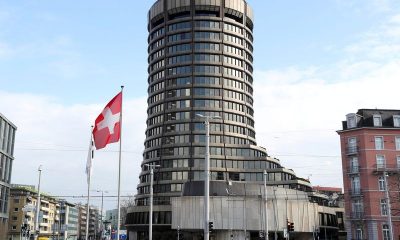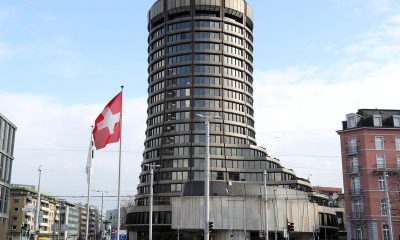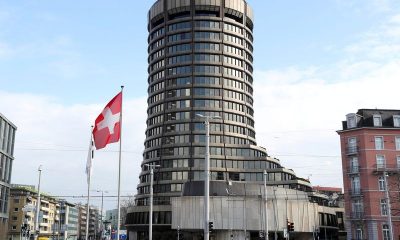Economy
Biden proposes new measures for student loan relief after Supreme Court defeat
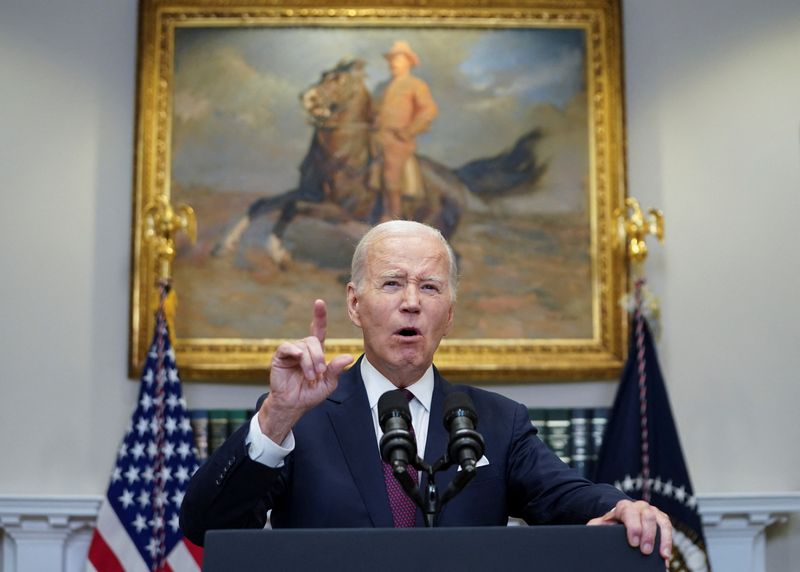
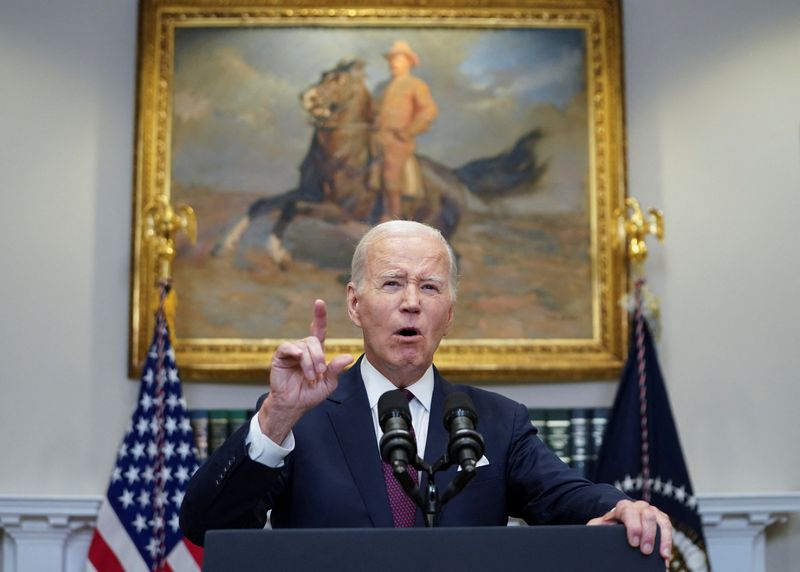
© Reuters. U.S. President Joe Biden speaks about the U.S. Supreme Court’s decision to strike down race-conscious student admissions programs at Harvard University and the University of North Carolina, during brief remarks in the Roosevelt Room at the White House i
By Steve Holland and Jeff Mason
WASHINGTON (Reuters) -President Joe Biden on Friday announced new measures to provide student loan relief to Americans and condemned the U.S. Supreme Court for blocking a plan to cancel hundreds of billions of dollars in debt that was popular with his voters.
Thwarted by the conservative-leaning court, Biden told reporters that his administration would pursue student loan relief through a different avenue, the Higher Education Act. The Education Department launched a regulatory “rulemaking” process that is likely to take months.
In a 6-3 decision earlier on Friday, the Supreme Court blocked Biden’s plan to cancel $430 billion in student loan debt. The ruling, which was welcomed by Republicans, threatened to dismantle part of the Democratic president’s policy agenda.
Biden said his administration would pursue a different way to achieve his goal.
“Today’s decision has closed one path. Now we’re going to start another,” Biden told reporters. “I believe the court’s decision to strike down my student debt relief program was a mistake, was wrong. I’m not going to stop fighting to deliver borrowers what they need, particularly those at the bottom end of the economic scale.”
As part of the overall plan, the Education Department finalized a program to reduce payments that borrowers with undergraduate loans have to pay monthly to 5% of discretionary income rather than 10%, which the administration said would help them save $1,000 a year.
Loan forgiveness would be offered to borrowers with balances of $12,000 or less after 10 years of payments rather than 20 years – a benefit aimed at helping community college graduates.
Progressive voters, who are part of the coalition that helped elect Biden in 2020, long have put pressure on the White House to address student loan debt; the court’s decision intensified calls for further action.
“The President has more tools to cancel student debt – and he must use them,” Democratic Senator Elizabeth Warren, a leading progressive voice, said on Twitter after the Supreme Court’s decision and before Biden spoke.
Progressive House Democrat Alexandria Ocasio-Cortez urged Biden to use authorities under the Higher Education Act to continue loan forgiveness before payments resume after a pause. “We still have the power to cancel and must use it, or we’re looking at an economic crisis for millions of people,” she said on Twitter.
About 53% of Americans supported Biden’s original student loan forgiveness program, while 81% of Democrats did so, a Reuters/Ipsos poll showed this year.
Democrats want voters to see Biden fighting for student debt relief ahead of his re-election bid in 2024, hoping conservative rulings from the court on debt relief and affirmative action or race-conscious college admission considerations would galvanize them in the same way the court’s ruling to strike down abortion rights did in 2022.
The White House made clear it would be putting blame on Republicans for stymieing student-loan relief efforts. Biden blasted Republican elected officials for supporting billions of dollars in pandemic-related loans to businesses that were eventually forgiven but not supporting student debt relief.
Education Secretary Miguel Cardona, in a briefing with reporters, listed a handful of Republican lawmakers, whom he named, who collectively had had millions of dollars in pandemic-related loans forgiven.
Republicans argued that Biden’s initial student-loan relief plan was unconstitutional and unfair.
“Biden’s student loan bailout unfairly punished Americans who already paid off their loans, saved for college, or made a different career choice,” Republican National Committee (RNC) Chairwoman Ronna McDaniel said in a statement. “Americans saw right through this desperate vote grab, and we are thankful that the Supreme Court did as well.”
Economy
Russian central bank says it needs months to make sure CPI falling before rate cuts -RBC


© Reuters. Russian Central Bank Governor Elvira Nabiullina attends a news conference in Moscow, Russia June 14, 2019. REUTERS/Shamil Zhumatov/File Photo
MOSCOW (Reuters) – Russia’s central bank will need two to three months to make sure that inflation is steadily declining before taking any decision on interest rate cuts, the bank’s governor Elvira Nabiullina told RBC media on Sunday.
The central bank raised its key interest rate by 100 basis points to 16% earlier in December, hiking for the fifth consecutive meeting in response to stubborn inflation, and suggested that its tightening cycle was nearly over.
Nabiullina said it was not yet clear when exactly the regulator would start cutting rates, however.
“We really need to make sure that inflation is steadily decreasing, that these are not one-off factors that can affect the rate of price growth in a particular month,” she said.
Nabiullina said the bank was taking into account a wide range of indicators but primarily those that “characterize the stability of inflation”.
“This will take two or three months or more – it depends on how much the wide range of indicators that characterize sustainable inflation declines,” she said.
The bank will next convene to set its benchmark rate on Feb. 16.
The governor also said the bank should have started monetary policy tightening earlier than in July, when it embarked on the rate-hiking cycle.
Economy
China identifies second set of projects in $140 billion spending plan


© Reuters. FILE PHOTO: Workers walk past an under-construction area with completed office towers in the background, in Shenzhen’s Qianhai new district, Guangdong province, China August 25, 2023. REUTERS/David Kirton/File Photo
SHANGHAI (Reuters) – China’s top planning body said on Saturday it had identified a second batch of public investment projects, including flood control and disaster relief programmes, under a bond issuance and investment plan announced in October to boost the economy.
With the latest tranche, China has now earmarked more than 800 billion yuan of its 1 trillion yuan ($140 billion) in additional government bond issuance in the fourth quarter, as it focuses on fiscal steps to shore up the flagging economy.
The National Development and Reform Commission (NDRC) said in a statement on Saturday it had identified 9,600 projects with planned investment of more than 560 billion yuan.
China’s economy, the world’s second largest, is struggling to regain its footing post-COVID-19 as policymakers grapple with tepid consumer demand, weak exports, falling foreign investment and a deepening real estate crisis.
The 1 trillion yuan in additional bond issuance will widen China’s 2023 budget deficit ratio to around 3.8 percent from 3 percent, the state-run Xinhua news agency has said.
“Construction of the projects will improve China’s flood control system, emergency response mechanism and disaster relief capabilities, and better protect people’s lives and property, so it is very significant,” the NDRC said.
The agency said it will coordinate with other government bodies to make sure that funds are allocated speedily for investment and that high standards of quality are maintained in project construction.
($1 = 7.1315 renminbi)
Economy
Russian central bank says it needs months to make sure CPI falling before rate cuts -RBC


© Reuters. Russian Central Bank Governor Elvira Nabiullina attends a news conference in Moscow, Russia June 14, 2019. REUTERS/Shamil Zhumatov/File Photo
MOSCOW (Reuters) – Russia’s central bank will need two to three months to make sure that inflation is steadily declining before taking any decision on interest rate cuts, the bank’s governor Elvira Nabiullina told RBC media on Sunday.
The central bank raised its key interest rate by 100 basis points to 16% earlier in December, hiking for the fifth consecutive meeting in response to stubborn inflation, and suggested that its tightening cycle was nearly over.
Nabiullina said it was not yet clear when exactly the regulator would start cutting rates, however.
“We really need to make sure that inflation is steadily decreasing, that these are not one-off factors that can affect the rate of price growth in a particular month,” she said.
Nabiullina said the bank was taking into account a wide range of indicators but primarily those that “characterize the stability of inflation”.
“This will take two or three months or more – it depends on how much the wide range of indicators that characterize sustainable inflation declines,” she said.
The bank will next convene to set its benchmark rate on Feb. 16.
The governor also said the bank should have started monetary policy tightening earlier than in July, when it embarked on the rate-hiking cycle.

 Forex3 years ago
Forex3 years agoForex Today: the dollar is gaining strength amid gloomy sentiment at the start of the Fed’s week

 Forex3 years ago
Forex3 years agoUnbiased review of Pocket Option broker

 Forex3 years ago
Forex3 years agoDollar to pound sterling exchange rate today: Pound plummeted to its lowest since 1985

 Forex3 years ago
Forex3 years agoHow is the Australian dollar doing today?

 Cryptocurrency3 years ago
Cryptocurrency3 years agoWhat happened in the crypto market – current events today

 World3 years ago
World3 years agoWhy are modern video games an art form?

 Commodities3 years ago
Commodities3 years agoCopper continues to fall in price on expectations of lower demand in China

 Economy3 years ago
Economy3 years agoCrude oil tankers double in price due to EU anti-Russian sanctions

